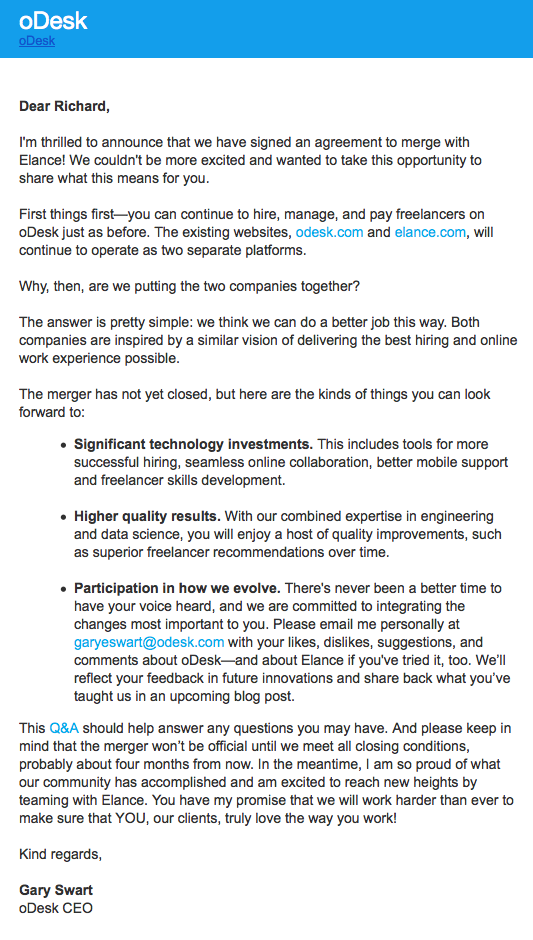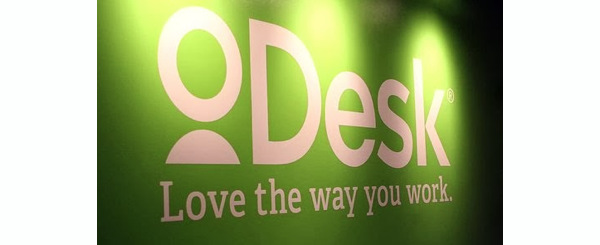Users on Elance and oDesk have voiced strong disapproval following the merger announcement. “Even after you merge, please don’t go cheap, don’t turn our Elance into odesk with it’s $5 projects and $1 rates. Let us continue earning our $$$$$$s,” begged Konstrantin Sharipov on the Elance Facebook page. While the companies are quick to insist that the platforms will continue to operate separately, the vitriol on Elance’s Facebook page should be enough to remind the executives that their savvy business deal has practical complexities that make true integration nearly impossible. Similar to Mac users versus PC users, Coke versus Pepsi and Chrome versus Firefox, the two platforms vie for clients by offering feature sets that are entirely different but subtly the same. Chris Fernandes commented “oDesk is like working at the MacDonalds of Freelancing.” Denise Casas commented on the oDesk Facebook page that the “oDesk interface is way better! Please continue to keep it simple and FREE for freelancers.” Most agree that oDesk excels at hosting low-cost labor contracts while Elance brings higher paying jobs. A minimum wage on Elance helps to enforce the difference.
While the specifics of the merger were not disclosed, our recent outsourcing portal expose dug up enough details on the two companies to speculate that Elance initiated the consolidation and will keep the upper hand. Gary Swart, chief executive of oDesk, was deferential following the announcement: “We don’t have to merge. We chose to.” The post-merger managerial structure puts Fabio Rosati, Chief of Elance, ahead of Mr. Swart who will be relegated to a “Strategic Adviser” – code word for being shown the door.
Despite Elance’s leverage, oDesk seems to have the market share in the volume of users and contracts. As the two companies await regulatory approval, oDesk outperforms Elance by an estimated $200 million per year in revenues. But executives at Elance in Mountain View, California have been more profitably in raising venture capital and maintaining customer loyalty – they’re estimated to have raised nearly $40 million more than oDesk last year. The company is also significantly older than oDesk which implies a more loyal customer base.
Nonetheless, consolidation of operations is why this merger makes sense. Their wait-and-see attitude will prevent significant changes to user experience for the time being. Time will tell how the two platforms leverage features across the isle.
“We have two very distinct platforms, each of which has value to its specific user base … so, in our case, we’re not focused on the traditional synergies two mature businesses might have, we’re trying to approach [the deal] in a unique way.” – Statement from Elance CEO Fabio Rosati
In the meantime, the Facebook fear mongers are united on one point that has historically occurred following mergers of this nature: everyone’s fees will increase when the competition is eliminated.
The below email came from Gary Swart following the merger announcement, its vapid content revealing nothing of how users will benefit from the merger, except to say there’s going to be “Significant technology investments” and “higher quality results”.







